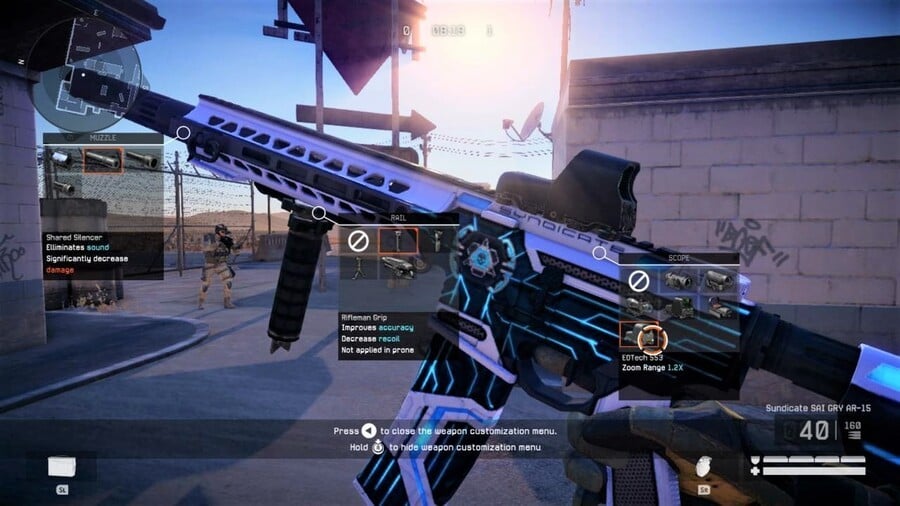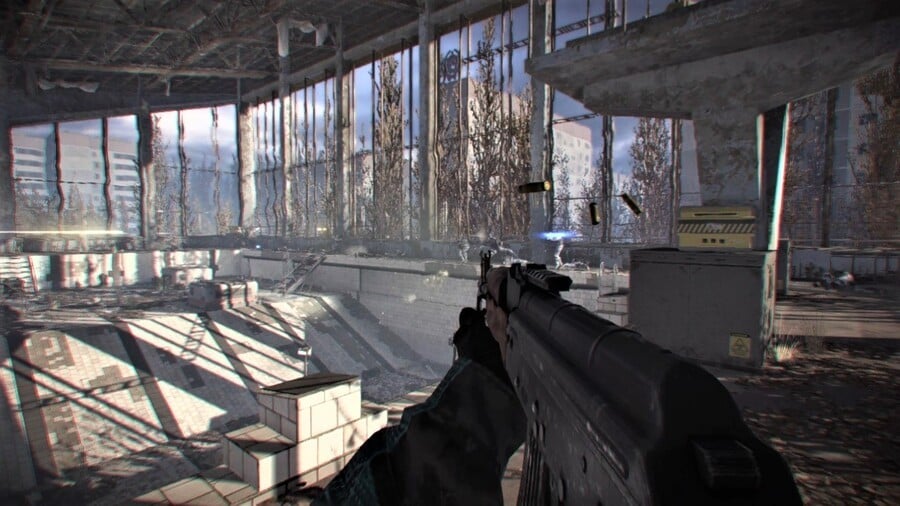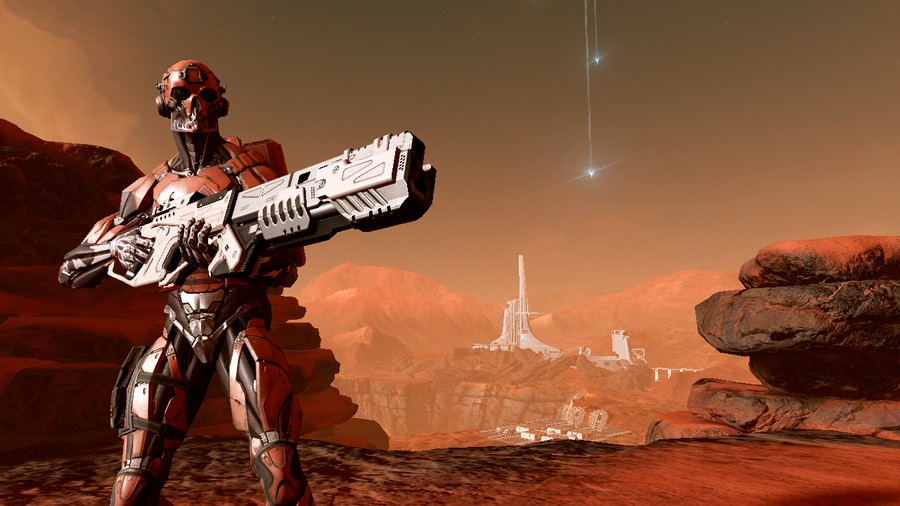
The release of Crysis Remastered on Switch has left many a gamer who remembers trying to get that massively taxing game running well on a PC back in the late 2000s scratching their heads in disbelief. We're still putting the game through its paces for review but, by most accounts, the handheld Switch version holds up rather well.
Of course, Crysis isn't the first FPS CryEngine game to come to Switch; free-to-download online shooter Warface landed on Nintendo's console earlier this year and impressed us with its enjoyably old school action. To find out a little more about the technical challenges of getting a CryEngine first-person shooter on Switch's mobile chipset, we caught up with Ivan Pabiarzhyn, Franchise Producer at Warface to discuss how the talented team managed it.
Subscribe to Nintendo Life on YouTube841k

When the team first sat down to look at the Switch hardware from a technical standpoint, what were your initial impressions and thoughts regarding its suitability for running CryEngine?
At first, we considered it an impossible task but then decided to give it a try.
As we understand it, Warface was built in CryEngine 3. Does your 2020 version of the engine bear much resemblance to the CryEngine 3 that launched over a decade ago? What are the biggest alterations or refinements that have been made over the years?
The original CryEngine as used in the original PC version of Warface didn’t support 64-bit or DirectX 11. So we had our work cut out for us in switching to x64 and DX11 on PC. When porting the game to the Nintendo Switch we wrote our own emulation of DX11 and tried to make it as fast as possible.
One of the things that we managed to keep intact on Switch is CryEngine’s dynamic lighting system.
Obviously, to get the engine running on Switch’s mobile chipset involves sacrifices. Can you explain some of the ways you tailored the engine to perform well on Switch?
One of the biggest unknowns for us was how well the CryEngine would work on the Switch hardware. In particular, one of the challenges was finding a balance between image quality and frame rate which was good enough for comfortable gameplay on the Nintendo Switch. We had to make sure it maintained a stable 30FPS in all gameplay modes. We did this by having a fixed resolution for Warface in both docked and portable modes. That wasn’t easy, but the team was able to skillfully achieve this with only minimal reduction to image quality.

Post-CryEngine 2 (following cries of ‘but will it run Crysis?’ which went on for years), scalability seemed to gain importance in future versions of the engine. Despite the hardware’s limitations, were there any technical features you were able to implement on Switch that surprised you?
One of the things that we managed to keep intact on Switch is CryEngine’s dynamic lighting system. You can see light bouncing realistically through open windows and onto players and their weapons in the Pripyat Special Operation, for example. Some of the new and upgraded graphical assets from the recent Mars and Titan Special Operations have also made the transition to Switch.
A more powerful GPU... would’ve allowed for better graphical fidelity and saved the team a lot of time in optimization
If you could upgrade a single component in the Switch to aid and smooth the development process, which part would you beef up? What would the effect be for a game like Warface?
A more powerful GPU. It would’ve allowed for better graphical fidelity and saved the team a lot of time in optimization.
Working with one engine for so many years must have its pros, as well as some cons. As a developer, at what point do you decide to make a clean break and switch to a different, newer version? If you were ever to make a sequel or a different game, would you stick with the engine you’re using now?
The longer you work with a tool, the better you become at using it. We always try and use the latest possible technology, but it’s the question of striking a balance between new features and maintaining the game’s stability. When working on a new game, we always consider every tool at our disposal that would be best for this particular project. Our team’s experience plays a major role when making those choices.
Given your experience bringing an established game to Switch from other platforms, are there any Switch ports from other studios that stand out as particularly notable from your point of view? What about them impressed you?
Warface is the Switch’s first free-to-play military shooter, so there wasn’t much in the way of precursors. But we did like the ease of access Fortnite provides for its players, so it was important for us to keep Warface free-to-play online without requiring a Nintendo Switch Online subscription.
We also knew that in terms of in-game content and modes we have both PvE missions and 11 completely different PvP modes including a “battle royale” mode. So, possibly, we have more interesting content to offer on these terms that anybody else on the market. As such, we didn’t really look at other games and just made the decisions we considered best for both our existing community and new players.

Warface on Switch gained 1 million players after its first month-or-so of release. Has the Switch version performed in line with your expectations?
Yes, but we weren’t -- and aren’t -- planning on stopping there. Our mission is constantly developing the project while coordinating our efforts with the platform’s requirements and building on the community’s feedback.
You added a 32-player Battle Royale mode back in April this year, too. What are your plans for the game going forward?
As our game is huge in content, at the moment not all the in-game content (special weapon series, themed kits) is available on Switch yet. We want to bring the Switch version up to the level of the PS4 and Xbox One version there were released earlier and launch full-blown crossplay between Switch and other systems.
Our thanks to the team for their time. Warface is out now (and free to download and play) on Switch eShop - check out our review of the game following its February launch. Crysis Remastered is also available - keep an eye out for our verdict soon.

Comments 17
That's what she said.
Has it been patched? I deleted it shorty after downloading on release as more often than not the game couldn’t find a game server.
It was that hit and miss it was frustrating.
Sounds like these guys have their head screwed on straight. I've got about 85 hrs played in Warface so far and I just downloaded Crysis last night. Only played about 15 minutes of it. Hopefully Crysis 2 and 3 get the remastered treatment in the future. It would be great to have the Trilogy on the go.
@SSGodLink Crysis 3 were running on Wii U many years ago, but never released.
Anyways. I mainly play Warface on Xbox One X, but i think the Switch version worked fine as i tried it for an hour or so.
“The longer you work with a tool, the better you become at using it”
😉
Didn't Crytek port the engine to the Wii U a long time ago? From memory the Wii U was fully supporting CryEngine from the get-go which means this process shouldn't have been too difficult given the similarities in architecture.
Then again, Crytek isn't exactly an "amateur" developer and it is their engine.
@Varkster Yeah, the critically acclaimed Sonic Boom Rise of Lyric was based on CryEngine on Wii U. The Wii U was a different architecture than Switch.
I've veen playing Warface for about a month now I think, so far I'm loving it. It def scratched that classic COD itch I had.
Constructive criticism: If the devs are reading this, is it possible to make the menus a bit more easy to get around with? At the moment they are rather clunky.
@Laxeybobby
Yeah sinds the updates i dont have any problems any more.
Wow, maybe next we can get games from the 2010s.
I spend a lot of time on Warface, great game.
To bad somebody decided it was a good idea to call the game W A R F A C E
@Yanina Oh, like Wharf Ace? or, hmmm
@Agriculture are you one of those people that think older release date = bad/easy to run?
@Coach_A The general rule holds though, 99.9% of AAA games are easier to run as technology advances through the years. Crysis however, they literally just chucked effects at it in order to make it look as good as possible. It was mind blowing at the time but dear lord, it even causes modern systems to barely hit 30 FPS at times. You can’t be that loose on console though, stable FPS is expected compared to PC, where players often tweak settings or compromise. So I don’t think they were wrong in that getting a game from 2007 isn’t usually a big deal but Crysis is definitely a special case.
I must be in the minority, but I hate battle royale games.
@Coach_A No, I play older games all the time. Recently I bought Far Cry 3 for $3. My point is that we should also be given newer games, not just older games for a high price.
Show Comments
Leave A Comment
Hold on there, you need to login to post a comment...